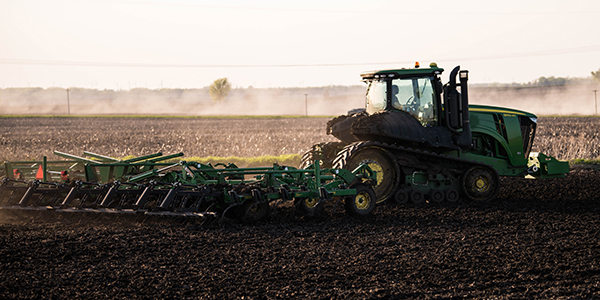AGRONOMICSUPPORT
YOU CAN TAKETO THE FIELD
Understanding Soil Compaction
Excessive rainfall this past fall not only caused a delay in harvest, but also forced many growers to run their equipment on soils that were wet, causing soil compaction. But soil compaction is not only limited to wet years. With increasing size of farm equipment in recent years, the risk of yield decreases from soil compaction have also increased.
For a soil to be healthy and productive, it needs to have good soils aeration. When a soil has good aeration, it creates an environment where roots can grow strong, beneficial soil microorganisms can flourish and soil health is maximized. An ideal seedbed would be half solids and half pore space. This pore space provides area for water and air to occupy. Not only providing conditions for crop growth, but also soil microorganisms. Soil compaction is caused when soil is compressed and reduces the pore space, thus allowing less air into the soil.
.jpg?sfvrsn=15eee601_0&MaxWidth=500&MaxHeight=&ScaleUp=false&Quality=High&Method=ResizeFitToAreaArguments&Signature=42DE0D856ED7F76E59A4288220E3E4F1E66B267B)
Effects of Soil Compaction Include:
- Reduced Root Growth: When soil pore space is reduced roots have a difficult time growing. Root growth is essential to stabilize the plant, to draw water and collect nutrients from the soil. When root growth is inhibited, we see increased lodging, increased drought stress and nutrient deficiencies.
- Reduced Infiltration Rate: Compaction destroys soil structure and slows the rate water moves from the surface to the soil through the soil profile. This can increase the risk of soil erosion. Nitrogen can be lost through denitrification and volatilization since compacted soils remain wetter for longer periods of time since water movement through the soil profile is slowed. Wetter soils also increase the risk of soil-borne pathogens such as Phytophthora, Fusarium and Sudden Death Syndrome.
Prevention of Compaction
- Limit field activities when soil is wet.
- Reduce weight of machinery. This can be done at harvest by unloading the combine more frequently and not filling grain carts, trucks and wagons as full when parked in the field.
- Improve field drainage/ By adding or updating field drainage, excessive soil moisture can move away faster.
Fixing Compaction
- Tillage: when fixing ruts, the goal should be to level the field where the ruts are located. Often, the soil is moist enough under the rut that any tillage would only move the compaction deeper. Also, do not do any tillage through standing water.
- Cover Crops: some cover crop species can help to alleviate compaction in two ways – First with strong root growth, compacted layers can be broken up. Secondly by adding organic matter and improving biological activity, which helps to add tilth and aeration.
Sources and additional information:
University of Minnesota, Soil Compaction
The Ohio State University, The Biology of Soil Compaction
Penn State University, Effects of Soil Compaction
Download a copy of this technical bulletin here: Soil Compaction






Technical Team Agronomist